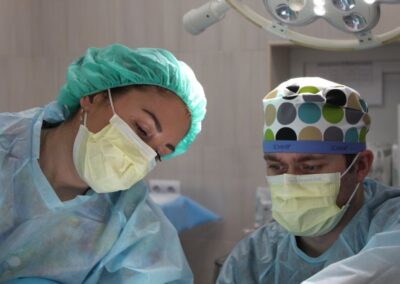PROMOTING LEADERSHIP BENCH STRENGTH IN YOUR MEDICAL GROUP: THE CRITICAL ROLE OF SUCCESSION PLANNING
There is no doubt that there is a need for more physician leadership depth in health care. In the past, there truly was a physician leadership void. Most physicians entered the medical field with the goal of practicing excellent clinical medicine—which is certainly noble and admirable. But at the same time, by not assuming leadership positions and not providing the appropriate voice, issues in healthcare were decided without optimal physician input. Fortunately, there are now a growing number of physicians choosing to pursue leadership roles and the physician leadership “gap” is finally lessening on the national level.
But can there be a leadership gap in your medical group? As a test, how would you answer the following question: If something were to change with your present physician leadership unexpectedly today, does your group have the bandwidth of leadership to continue its success with minimal disruption?
Having worked with many medical groups across the country, and mentored over 50 physician executives, I am impressed with the excellent quality and dedication of current physician leaders. But for the typical medical group, it had been one or two visionary physicians that initially formed the group and then shepherded the group since the inception. As a result, these medical groups can develop a huge dependency on those few leaders. What would happen if something unexpected were to occur and those leaders were not there?
I would recommend the following considerations as your medical group or practice looks at leadership and succession planning.
Leadership succession must be a part of your Group’s culture
For most medical groups, leadership succession does not even hit the radar, and they do not consider succession until a critical physician retires. They often figure that one can anticipate when that time would be. As such, leadership discussions are simply not a part of the Group’s business.
As part of business due diligence, at a minimum, the medical group must consider the possibility of a premature leadership departure prior to the anticipated retirement. Death or illness could intervene. The unexpected can happen. Although sometimes uncomfortable to talk about, succession planning must be a part of the business planning for every medical group and practice.
Make succession planning a component of the medical group’s strategic plan
Medical groups are realizing the importance of developing and successfully implementing a strategic plan. Healthcare has simply gotten too complicated, and to remain successful, your medical group must operate as a sound business.
Succession planning must become a standard component of that strategic plan. It should be a regular component of that plan much like business development, marketing, staffing, managed care contracting, etc. Just as business objectives are determined for the major strategic initiatives, there must be business objectives developed around succession planning. And like all business objectives, the succession objectives should be measured through metrics, managed, and updated through the course of the strategic planning period.
Develop a physician charter
Every medical group, either overtly or covertly, develops a group culture and system of values. As a result, the majority of medical groups are now developing compacts that list the key values of the group, also called a physician charter. This document is helpful in recruitment and retention of the ideal physician for that group.
Additionally, the group should further outline the key qualities and skillsets for their leaders. These guiding principles help identify potential leaders upfront. Put another way, the group must identify the ideal skill sets and competencies for the physician leaders prior to having to recruit.
Implement a leadership development plan for the Medical Group
Establishing a plan for leadership development is a crucial part of the succession planning process for any medical group or practice. Such a plan helps to develop the pipeline needed to have potential leaders standing by, now and into the future.
The leadership development plan should have three components:
- Leadership identification process – Using the criteria of the medical group compact and the leadership guiding principles as mentioned above, there should be an annual process where potential new leaders are proactively identified by the group, much like how other business objectives in the strategic plan are regularly monitored.
- Leader mentoring process – Once these potential leaders are determined, there must be a process to educate and groom those leaders. There is a great deal of information and skills that effective leaders must learn. Options may include conferences and even using leadership mentors, either internally or externally, to help facilitate the learning process. Critical topics include general leadership principles as well as specific didactic material required of a physician leader.
- Ongoing leadership assessment – How does one determine whether the leader is effective? As much as possible, the Medical Group should develop criteria to measure the performance of that leader.
Succession planning builds your leadership bench
So, how deep is your leadership bench? For most groups, it is shallow, with many medical groups not even scratching the surface in this area. It is not surprising that, when something happens unexpectedly with their leader, the group may panic and react.
Having a process in place as mentioned above will help the medical group better define its strategic goals, identify and mentor its future leaders, have a smoother transition of new leadership, and be in a stronger position to compete down the road.
Interested in learning more? I’m always happy to answer questions. Reach out to me here.




